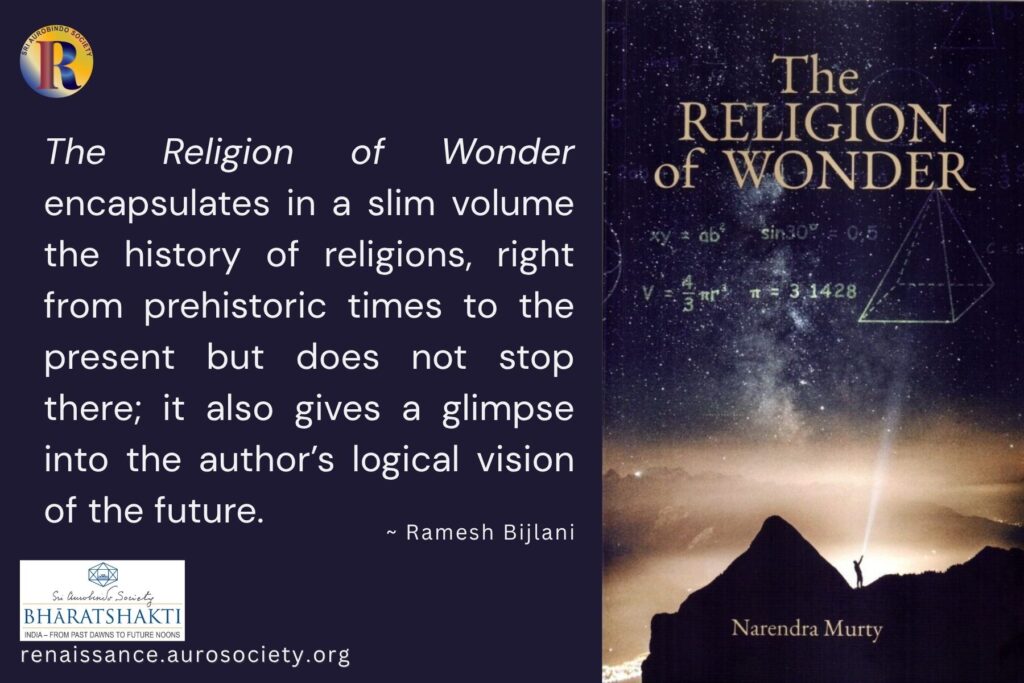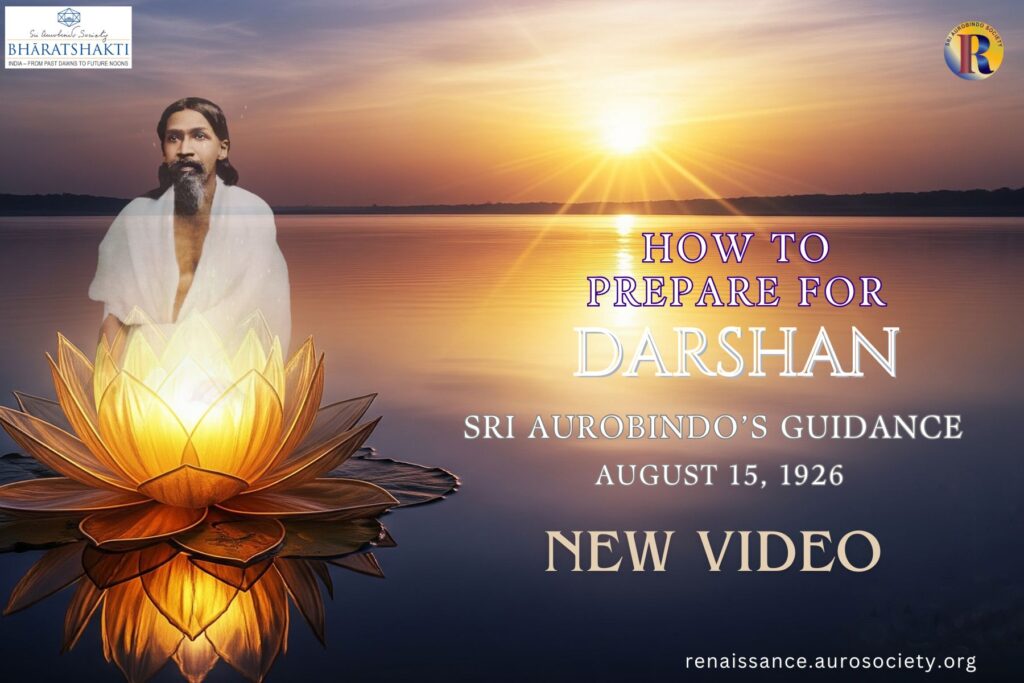Volume V, Issue 6-7
Author: M.P. Pandit
Editor’s Note: We have selected two short commentaries by the author from Volume 4 of Commentaries on the Mother’s Ministry. These entries are marked number 367 and 430. Together, these commentaries give us a comprehensive understanding of the right place and value of solitude in the dynamic Integral quest for progress, perfection and transformation.

Solitude and Yoga
Solitude, as commonly understood, is not indispensable for yoga. Indeed it is helpful, especially in the earlier stages, to have some privacy and time for oneself. It is difficult to get both in the modern way of life which is crowded both in space and time. Still a way has to be found to be able to pursue the inner quest in a reasonably secure environment.
But when it is overdone, when one resorts to physically solitary regions for the practice of yoga one finds that by itself, solitude does not carry one far. For physical solitude assures only physical non-interference. But yoga is more a psychological discipline to reorient one’s nature, activise the inner faculties, quieten the mind and emotions etc.
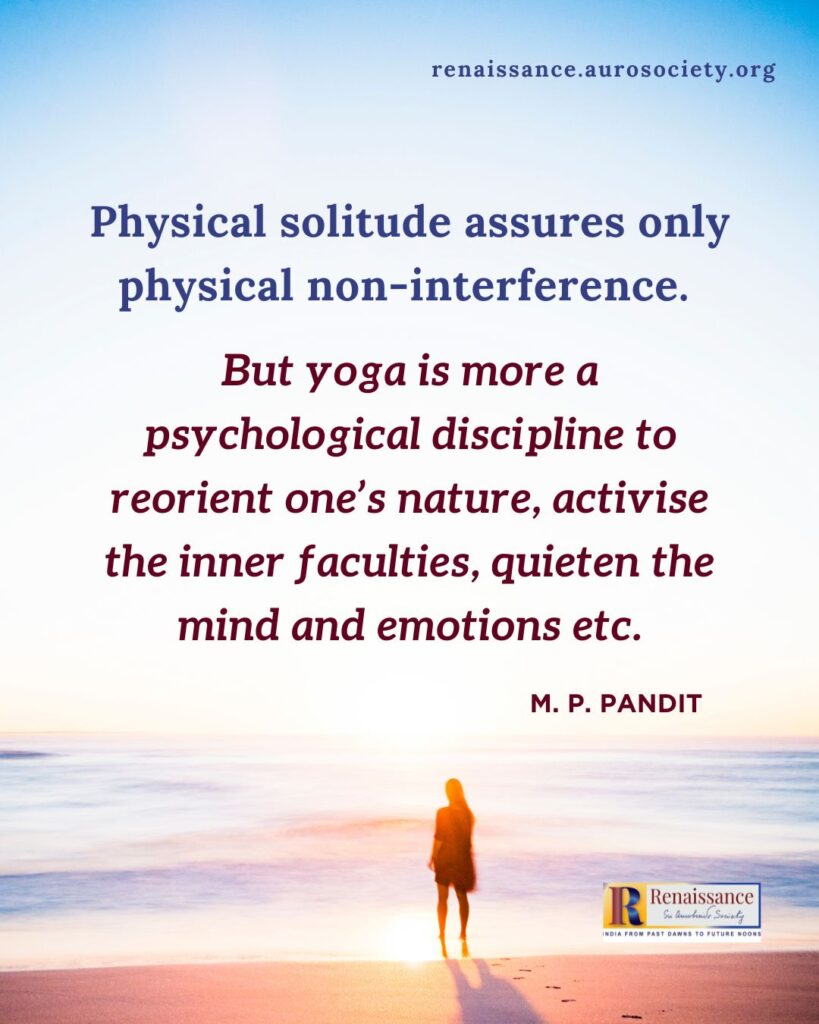
The mind for instance, needs to be worked upon, calmed and eventually silenced.
It is found, in experience, that merely going to a solitary place does not give the needed solitude to the mind. The person carries with himself all the mental baggage that he is used to in the work-a-day life. The same problems, the same habits, the same cycles of thought, continue.
Besides, the thought vibrations of others are not stopped by physical distance. They do come and impact and evoke a reaction. The practitioner touched by a vibration from someone else gets a thought of the person and there is a movement in that direction. Similarly with feelings. The world is more closely knit than commonly recognised.
There is another danger.
Isolated from contacts with people, events, active physical movements, he develops a subjective tendency. He tends to live in a world of his own undisturbed by contacts or calls that would sting him into reality. Cases have been aplenty of such persons living in a realm of fantasy and building structures of imagination in which they stay imprisoned. Physical solitude is thus necessary up to a reasonable extent but when it is given excessive importance it becomes dangerous.
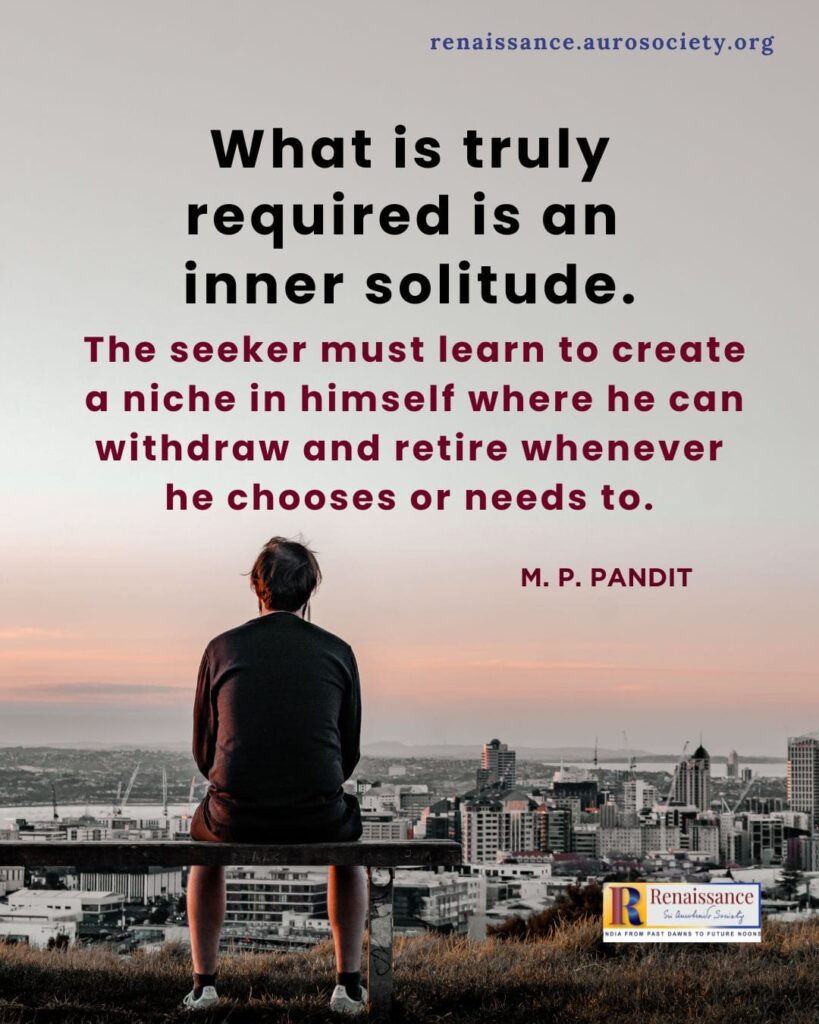
What is truly required is an inner solitude.
The seeker must learn to create a niche in himself where he can withdraw and retire whenever he chooses or needs to. It is a matter of practice. When he succeeds in forming this corner of solitude in himself, he may live and work in the most noisy, crowded environment but he is not affected in his composure. He can at will retire into his inner chamber and refresh himself. External activity could continue mechanically even when he is thus gathered within.
Such a yogi is simultaneously aware of both the worlds, the outer and the inner.
He learns to harmonise them in himself and has no problem. The inner support helps him to acquire a strong equality which enables to meet all contacts without reacting to them in the usual way. In time this inner solitude reflects itself in the immediate surroundings of the yogi; one feels there a palpable peace, a breath of transcendence.
***
“The Divine does not demand a complete solitude, aloof and lonely—it is only a few whose nature needs such concentration within to find themselves who have to do that and even for them a complete segregation is not likely to be helpful except perhaps for a time. All that is necessary is a total turning of the life to the Divine and it can be done by degrees without too much forcing of the nature.”
~ Sri Aurobindo, CWSA, Vol. 29, p. 381
***
No Solitude
From the spiritual point of experience, there is no solitude. What passes by that name is only a physical solitariness. The rest of the being continues to be crowded as ever. The mind is perhaps more active in its thought movements in the absence of physical distractions.
All kinds of thoughts rush in; those relating to the present, the past and fantasying of the future—all make a beeline. The emotions, the desires, the passions run unabated, in the absence of the counterbalancing physical pressures. One cannot get away from oneself.
What is really required in sadhana is quietude.
This state must be so founded that it is not affected by the customary contacts and impacts of the work-a-day world. Activity of whatever kind—physical or mental or emotional—should not be allowed to interfere with the inner quiet. One must learn the art of carrying on activity on a plane, in a manner, that does not affect the inner attention or preoccupation.
In other words the external activity is reduced to a routine exercise that does not call for inner concentration to be diverted. And that is possible if one does not get involved in the action, does not get totally identified with it.
The first step towards this end is to eliminate the personal element in the activity.
The action is done as it has to be done; personal preference, personal expectations must not be projected into the activity. The Gita has a few practical instructions on the point. There should be no claim for the fruits of the work. The sense of doership must be steadily replaced by the feeling of being an instrument. There should not be a claim for the choice of the work; whatever comes must be taken as an assignment from the Master of Works.
In the measure in which one works in this spirit, the tension of action, with all its attendant expectation, excitement, disappointment, is reduced. Whatever the nature of the activity, it is carried on by the surface parts of the being. The inner and the main part is left free to attend to the inner call.
It is wrong to think that without a whole-dimensional involvement, the quality of the work is likely to suffer. On the other hand, the quiet base from which the activity proceeds is a guarantee that one is more effective.
Thus the true solitude is an inner separation, a detachment of the inner being.
Within, one lives alone. It should not matter where one is—in the midst of a crowd or in a laboratory. Nobody can invade this privacy of the soul.
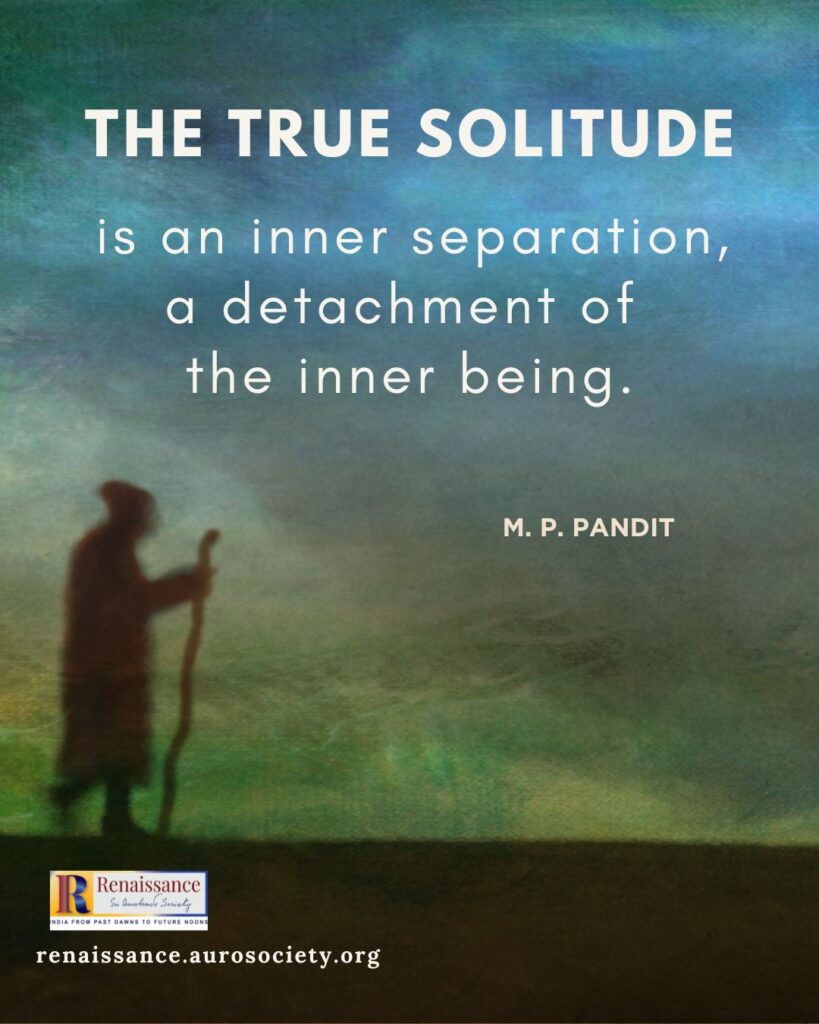
Read:
Sri Aurobindo on Social Relations, Retirement and Sadhana
~ Design: Beloo Mehra


